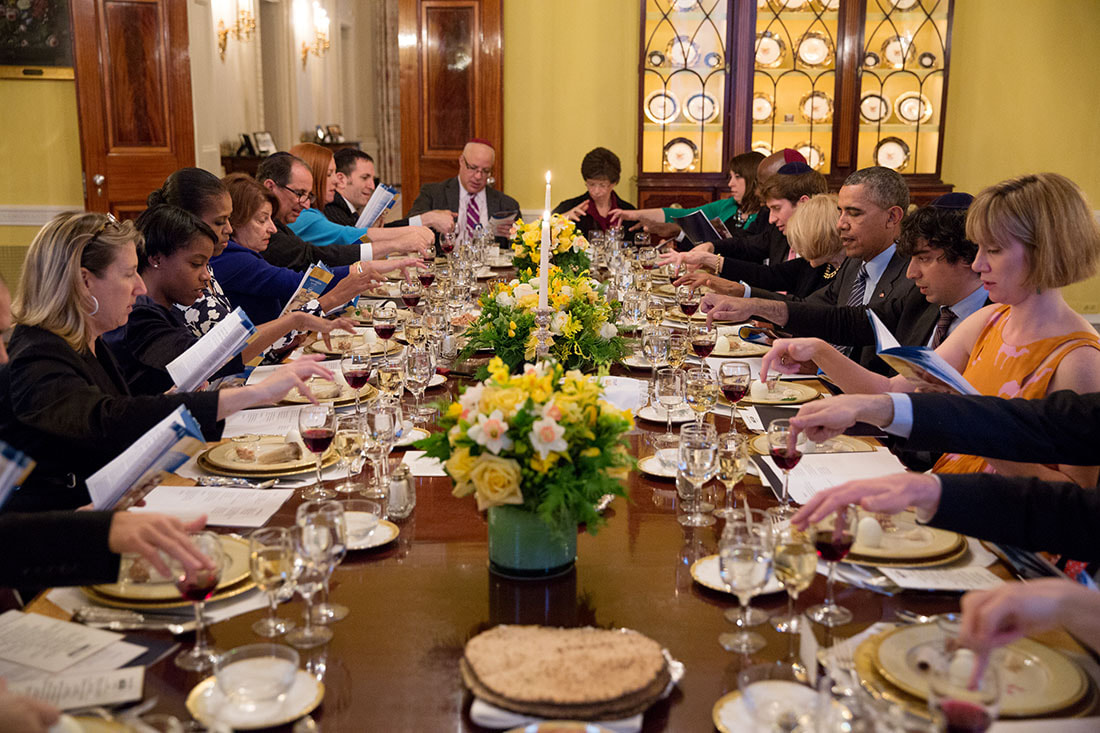Return to Newsletter main page! |
Passover Around The WorldBy ISJL Education Fellow Sierra Debrow
A famous song by Rabbi Larry Milder once taught me “wherever you go, there’s always someone Jewish.” And it’s (mostly) true! Jews live all over the world, from Amsterdam to Tel Aviv. Those whose families come from Eastern Europe (places such as Poland and Russia) are called Ashkenazi Jews. Those whose descendants are from countries like Spain and Portugal are referred to as Sephardic Jews. Jews whose descendants come from countries in the Middle East are referred to as Mizrahi Jews. While some customs are the same for Jewish communities across the globe, some specific traditions vary based on the society and culture in which a community is based. This year, as you prepare for Passover, learn a little more about Jewish traditions from a subculture that is different than your own. A Seder Plate on Your Head: Mazal Tov, Mazal Tov! The seder plate is often the center of a Passover seder. In places like Tunisia, Sicily, and Sardinia, this object’s introduction to the seder is of great importance—as it is brought into the room, it is placed on the head of the leader of the seder. The plate is then passed around the table from person to person. Each person briefly puts it on each person’s head as it reaches them, reminding everyone that we were once slaves in Egypt and that we carried heavy burdens on our head—both literally and figuratively. Charo-SET the Date Charoset is one of the foods placed on the seder plate. It is a mortar-like substance, eaten to remind us that when the Israelites were slaves in Egypt, they had to mix mortar to make bricks to be used in Egyptian buildings. Traditionally, Ashkenazi charoset is made with apples, cinnamon, nuts, and wine; Sephardic recipes call for dates instead of apples, as crushed dates are similar in color to mortar; and Mizrahi recipes also use other fruits mentioned in the Torah, such as figs, raisins, and carob. Haggadah Aggadah There comes a time in every Passover seder for us to retell the story of the Ancient Israelites’ exodus from Egypt. While many haggadot do a fantastic job of illustrating it, some traditions call for a livelier retelling of events. Some Sephardic and Mizrahi Jews reenact the story of Exodus through a skit, calling on every seder attendee to be a part of the storytelling process. In some Irish Jewish communities, parts of the Haggadah are sung to the melody of traditional Irish songs. The Jews of Kaifeng remove the tablecloth from the table before holding up the matzah and saying “this is the bread of affliction” and return the tablecloth to the table just before saying “we were slaves to Pharaoh in Egypt,” with the purpose of provoking questions from those at the seder table. Mimouna for Everyone! How do you celebrate the end of Passover? Some Sephardic synagogues across the Mediterranean celebrate with a festival called Mimouna. They open their synagogues one minute after midnight and dance in the aisles while Song of Songs is read. They consume celebratory foods, including pita dipped in honey—a symbol that families are brought together by freedom and how oppression will never separate the Jewish people ever again. As Passover approaches, we can all recall the beautiful traditions that we have at our own family seder. This year, however, consider adopting some traditions from the global Jewish community, enriching everyone by connecting to a Jewish family larger than our own personal ones. |
- Home
- WHO WE ARE
-
WHAT WE DO
- PODCAST
- Conference >
- Education >
-
CULTURE
>
- Culture Overview
- Cultural Programming >
-
History
>
-
Encyclopedia of Southern Jewish Communities
>
- Alabama Encyclopedia
- Arkansas Encyclopedia
- Georgia Encyclopedia
- Florida Encyclopedia
- Kentucky Encyclopedia
- Louisiana Encyclopedia
- Mississippi Encyclopedia
- North Carolina Encyclopedia
- Oklahoma Encyclopedia
- South Carolina Encyclopedia
- Tennessee Encyclopedia
- Texas Encyclopedia
- Virginia Encyclopedia
- Encyclopedia Credits
- Oral History
-
Encyclopedia of Southern Jewish Communities
>
- SPIRITUALITY >
- DONATE
- Shalom Y'all
- Strategic Plan
- Southern & Jewish Blog
- Calendar
- Virtual Press Kit
|
©2024 Goldring/Woldenberg Institute of Southern Jewish Life
|

